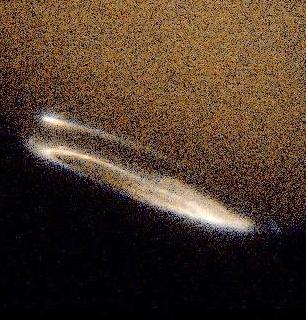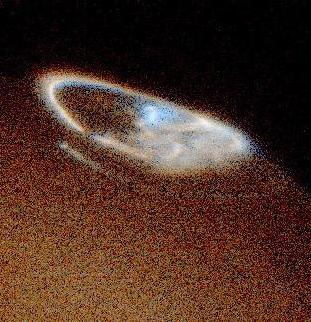Astronomy Picture of the Day
Discover the cosmos! Each day a different image or photograph of our fascinating universe is featured, along with a brief explanation written by a professional astronomer.
January 23, 1998

|

|
Discover the cosmos! Each day a different image or photograph of our fascinating universe is featured, along with a brief explanation written by a professional astronomer.
January 23, 1998

|

|
Explanation: These two recently released Hubble Space Telescope close-ups show the Northern and Southern lights ... on Jupiter. Like aurora on Earth, these Jovian aurora are caused by charged particles funneled into the atmosphere above the planet's North (right) and South poles by magnetic fields. But Jupiter's magnetic field is extremely large and ionized material expelled from the volcanic moon Io is trapped in it creating light shows 1,000 times more intense than Earth's auroral storms. Charged particles released by Io are also funneled along magnetic flux tubes which form a direct "bridge" to the Jovian atmosphere. The result is auroral hot spots - magnetic footprints 600 or more miles across which race over Jupiter's cloud tops. A hot spot is visible in both images as a comet-like feature just outside the polar auroral rings. In these false color ultraviolet images, Jupiter's limb (edge) appears dull brown while the auroral displays are shades of white and blue.
Authors & editors:
Robert Nemiroff
(MTU) &
Jerry
Bonnell (USRA)
NASA Technical Rep.:
Jay Norris.
Specific rights apply.
A service of:
LHEA
at
NASA/
GSFC
&:
Michigan Tech. U.